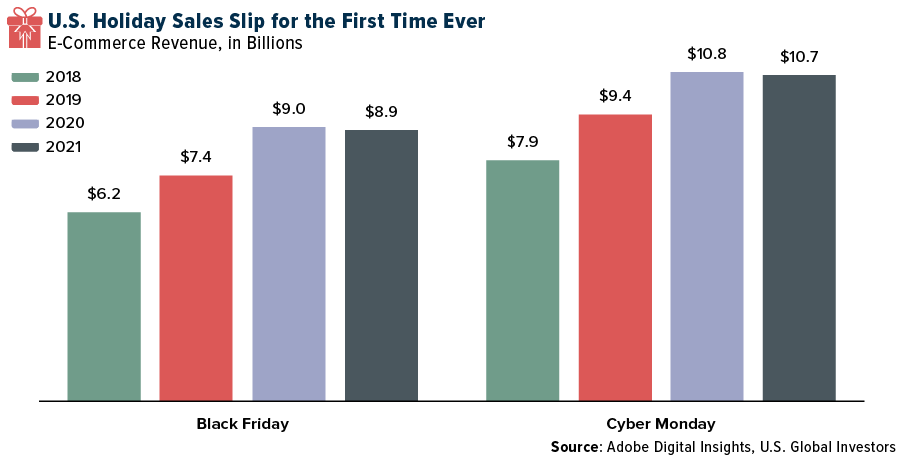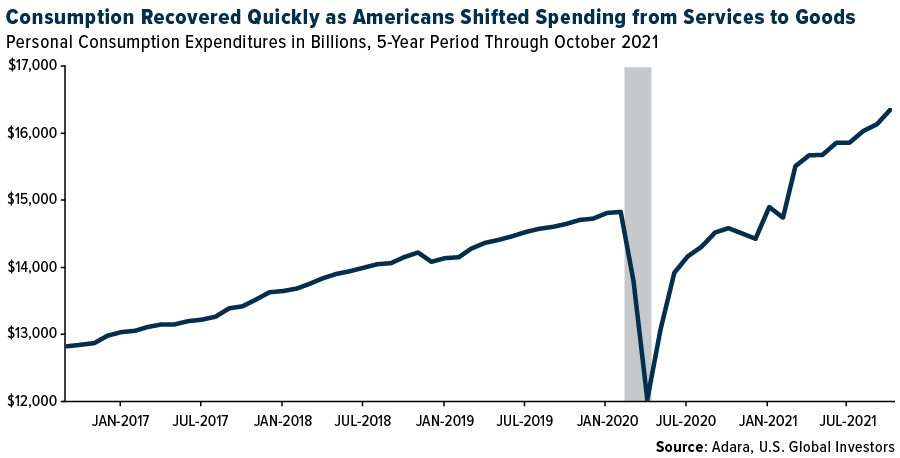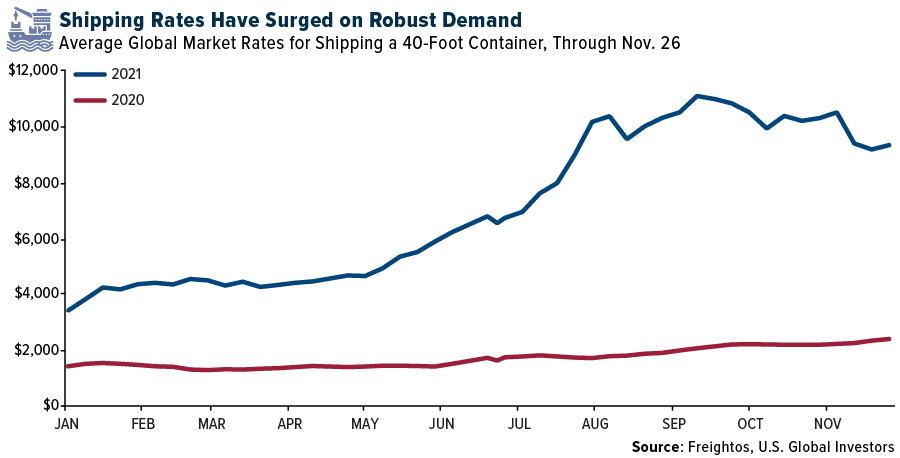Online sales during 2021’s Black Friday and Cyber Monday shopping holidays ended up being slightly less than those of the previous year, representing the first time such a decrease has been recorded. Americans shelled out $8.9 billion on Black Friday deals and $10.7 billion on Cyber Monday specials, compared to $9 billion and $10.8 billion in 2020, according to Adobe Analytics.

Consumer spending makes up about 70% of the U.S. economy, so some may interpret these results as a worrisome sign of things to come. I don’t see it this way for a few different reasons, and in fact the lower sales figures could be yet another example of “bad news is good news.”
Not every retailer saw declining e-commerce revenues from last year, by the way. Amazon reported a record-breaking shopping season between Black Friday and Cyber Monday, with home goods, toys and apparel being the top-selling categories.
By All Accounts, Consumption Looks Solid
The likeliest explanation for why Americans didn’t set a new sales record this past weekend is that they’ve been spreading out their discretionary spending throughout the year. Unlike in years past, people appear not to have waited for Black Friday deals to buy a new TV, update their kitchen appliances or splurge on luxury goods. What’s more, many retailers introduced discounts much earlier than usual.
This is all confirmed by Adobe data for November. During the month, Americans spent $109.8 billion online, representing a 12% increase over November 2020. Adobe adds that 22 days of the month exceeded $3 billion in shopping, a new milestone.
Take a look below. Consumption in the U.S. grew $214.3 billion, or 1.3%, from September to October, marking the eighth straight month that personal expenditures increased.

The pandemic has largely contributed to heavier consumption. Supported by low rates, easy money and rising wages, consumers have by and large shifted much of their discretionary spending from experiences (dining out, movies, concerts) to merchandise. In the first half of 2021, for example, the giant luxury goods conglomerate LVMH posted a record 28.7 billion euros ($34.0 billion) in sales. And according to Bain & Company, the global luxury goods market is expected to hit a record 283 billion euros ($325 billion) by year end, a small increase from total revenues in the first half of 2019.

Unprecedented shipping rates are a clear sign that demand has been much higher than average this year. According to Freightos, the average global rate to ship a single 40-foot container stood at $9,351 at the end of November, a nearly fourfold increase from last year.
Likewise, congestion remains elevated in ports around the world. The Port of Hamburg in Germany recently reached record rail container volumes of 2.1 million TEUs (20-foot equivalent units) in the first nine months of 2021. The port also reported handling the highest total of containers during the third quarter, transporting some 709,000 TEUs by rail.
Related: 3 Bullish Indicators For Airlines, Shipping And Bitcoin


